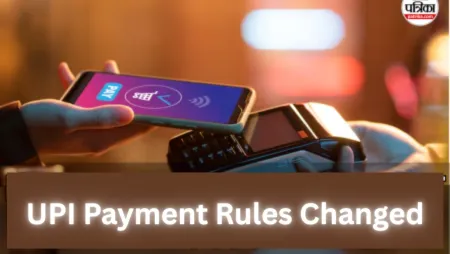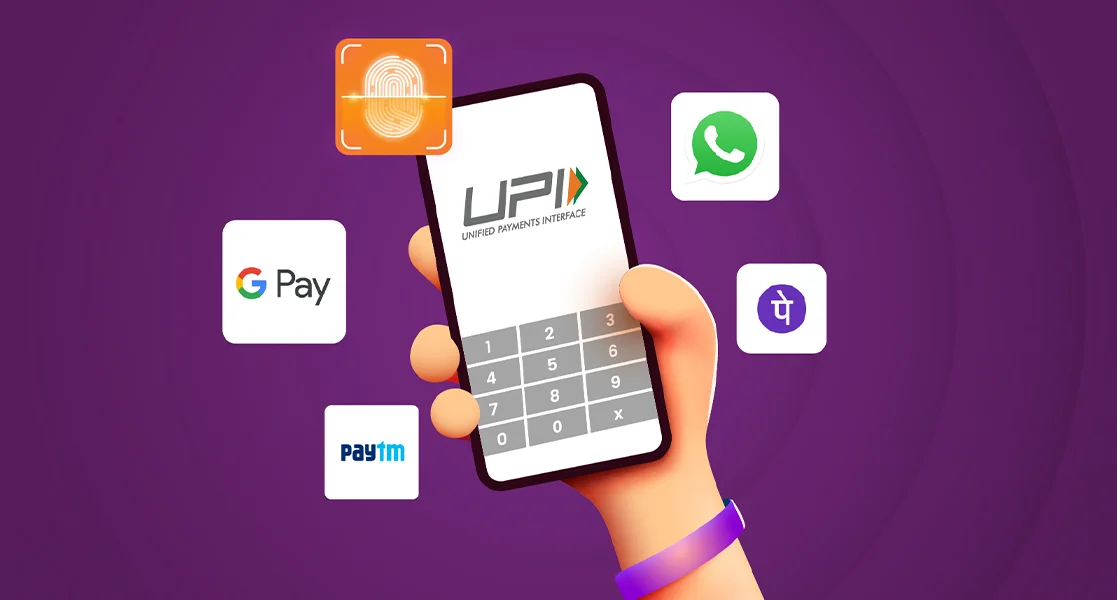UPI Rule Changes 2025: In a landmark decision aimed at promoting ease of digital payments, the National Payments Corporation of India (NPCI) has announced significant changes to the Unified Payments Interface (UPI) rules, effective from September 15, 2025. These revisions bring higher limits and sector-specific adjustments, making UPI transactions more flexible for large payments related to insurance, loans, investments, travel, and government payments.
This regulatory overhaul comes as a much-needed relief for consumers and businesses alike, addressing long-standing issues related to low payment caps that often created hurdles in high-value transactions. Let’s dive deep into what these new changes entail, how they impact you, and the security measures you must adopt.
Higher Flexibility for Large Transactions
One of the most prominent changes is the substantial increase in the daily limit for Person-to-Merchant (P2M) UPI transactions, now raised to ₹10 lakh. This update will especially benefit businesses and consumers who frequently engage in high-value transactions and were previously restricted by lower limits.
Sector-Specific Limit Changes
Insurance and Investments
- Previous Limit: ₹2 lakh per transaction
- New Limit: ₹5 lakh per transaction
- Daily Cap: ₹10 lakh remains unchanged
This adjustment simplifies large premium payments, investment contributions, and other related financial transactions without requiring cumbersome bank transfers.
Government Payments & GeM Portal
- Payments on the Government e-Marketplace (GeM) now have a per-transaction limit of ₹5 lakh, up from ₹1 lakh.
- These payments cover taxes, earnest money deposits, and other official charges, offering seamless transactions for businesses engaging with the government.
Travel Sector
- Previous Limit: ₹1 lakh per transaction
- New Limit: ₹5 lakh per transaction
- Overall daily cap: ₹10 lakh
This allows easier payments for flight tickets, hotel bookings, and other travel-related services through UPI.
Credit Card Bill Payments & Loan EMIs
- Now, credit card dues can be paid up to ₹5 lakh in a single transaction, with a 24-hour cap of ₹6 lakh.
- Loan EMIs can be paid up to ₹5 lakh per transaction and ₹10 lakh per day, offering significant convenience for borrowers managing large loan amounts.
Jewellery & Banking Services
- Jewellery purchases can now go up to ₹2 lakh per transaction, with a daily cap of ₹6 lakh.
- For banking services such as term deposits, the per-transaction limit is now ₹5 lakh.
What Remains Unchanged
- The Person-to-Person (P2P) transfer limit continues to be ₹1 lakh per day, ensuring that small, personal transfers remain within the existing threshold.
Read about: CBI Busts Fake Insurance Call Centres in Nashik Targeting UK Citizens
Expert Insights and Cautionary Advice
Financial technology experts have welcomed the NPCI’s decision, calling it a major step toward greater digital financial inclusion. These updates are expected to enhance the ease of doing business and improve customer experience by removing previous barriers.
However, Professor Triveni Singh, a former IPS officer and cybercrime expert, warns about potential risks:
Her advice emphasizes the need for cybersecurity awareness, especially in light of these new higher transaction limits, which could become a target for fraudsters.

The Bigger Picture: UPI’s Role in India’s Digital Economy
The revised UPI rules represent a major leap forward in India’s digital payments infrastructure, promoting financial transparency and reducing dependency on cash transactions. As India pushes toward becoming a less-cash economy, these reforms are seen as critical enablers of large-scale digital adoption.
However, the changes also introduce new challenges related to cybersecurity. Experts emphasize that the success of India’s digital economy will depend on balancing innovation with robust security measures.
Conclusion
The UPI rule changes effective from September 15, 2025, aim to revolutionize digital payments by significantly increasing transaction limits across critical sectors such as insurance, loans, travel, government payments, and investments. These adjustments are poised to make UPI a preferred mode of payment for high-value transactions in India, enhancing both convenience and financial inclusion.
Consumers now have the freedom to manage large transactions without the hassle of traditional bank transfers, while businesses benefit from seamless and faster payment processing. However, higher limits also warrant greater cybersecurity vigilance. Users must adopt best practices to protect their financial data, and institutions should strengthen their fraud detection frameworks.
As India’s digital economy grows, these reforms represent a milestone in empowering individuals and businesses alike to conduct secure, high-value transactions conveniently via UPI.
Also read: MotoGP 2025: Yamaha Unveils V4-Powered YZR-M1 – A Major Shift from Inline-Four Engine
Frequently Asked Questions
1. What are the new UPI transaction limits effective from September 15, 2025?
The new UPI rules increase the Person-to-Merchant (P2M) daily limit to ₹10 lakh. Sector-specific changes include a rise in insurance and investment payments to ₹5 lakh per transaction, GeM portal payments up to ₹5 lakh, and travel payments raised to ₹5 lakh per transaction. Loan EMIs and credit card dues can also be paid up to ₹5 lakh per transaction.
2. Why has NPCI implemented these higher UPI limits?
The NPCI aims to promote ease of doing business, reduce reliance on traditional bank transfers, and boost the adoption of digital payments across India. By increasing limits in critical sectors, the move ensures a more efficient, transparent, and accessible financial ecosystem for large transactions.
3. Are there any risks associated with these higher limits?
Yes. With higher transaction limits comes an increased risk of cyber fraud. Users are advised to remain cautious by only using official apps and websites, not sharing sensitive information over calls or suspicious links, and keeping their devices updated. Banks and regulators are expected to improve fraud monitoring mechanisms.
4. Will Person-to-Person (P2P) UPI limits change?
No, the P2P daily limit remains unchanged at ₹1 lakh per day. The new rules focus primarily on business-related transactions and high-value payments rather than personal transfers.
5. How can I safely make large transactions using UPI?
- Always use official UPI apps (such as BHIM, Google Pay, PhonePe, etc.).
- Never share your UPI PIN or OTP with anyone.
- Verify the recipient’s details before making a large payment.
- Avoid accepting payment requests from unknown or suspicious sources.
- Ensure your phone has up-to-date security software installed.






